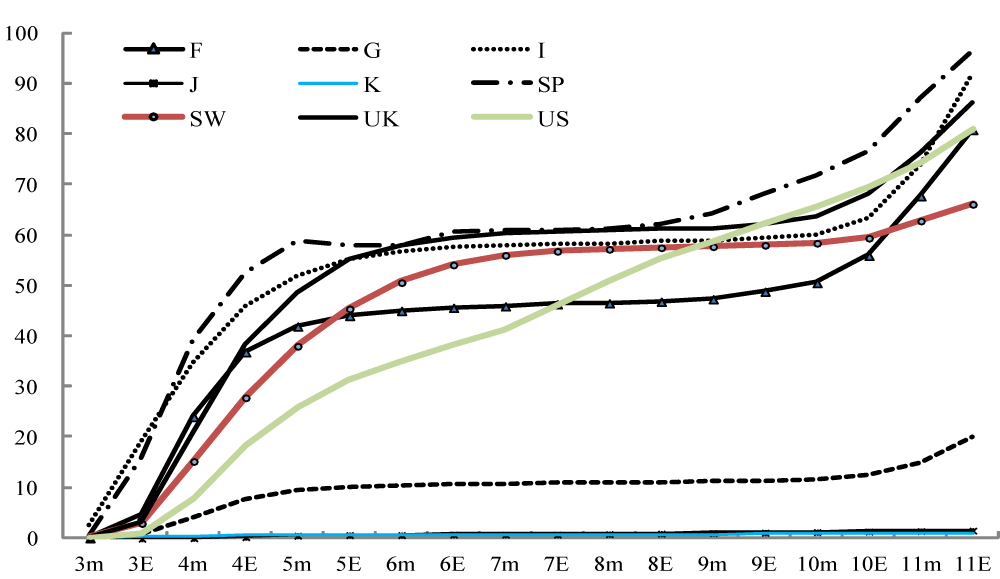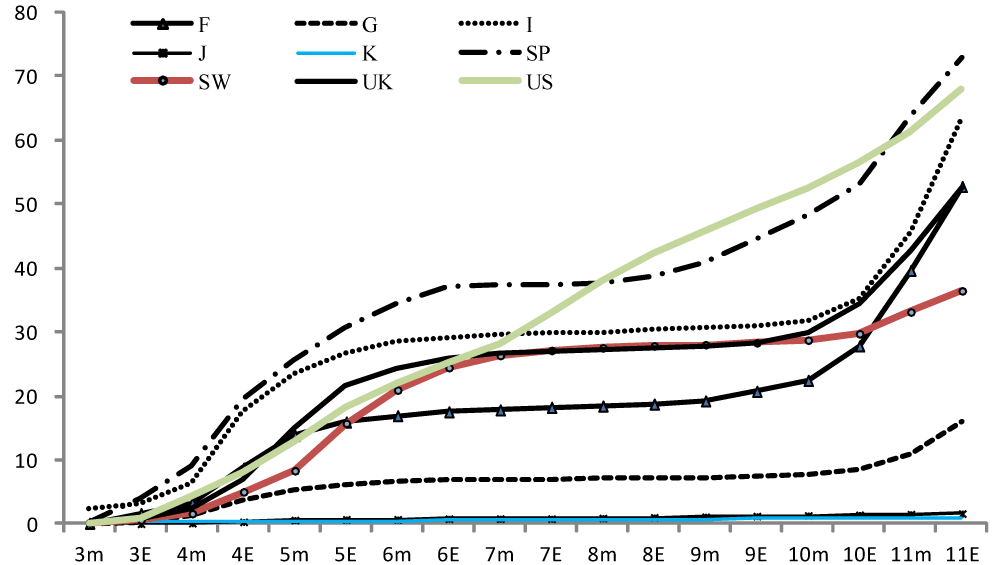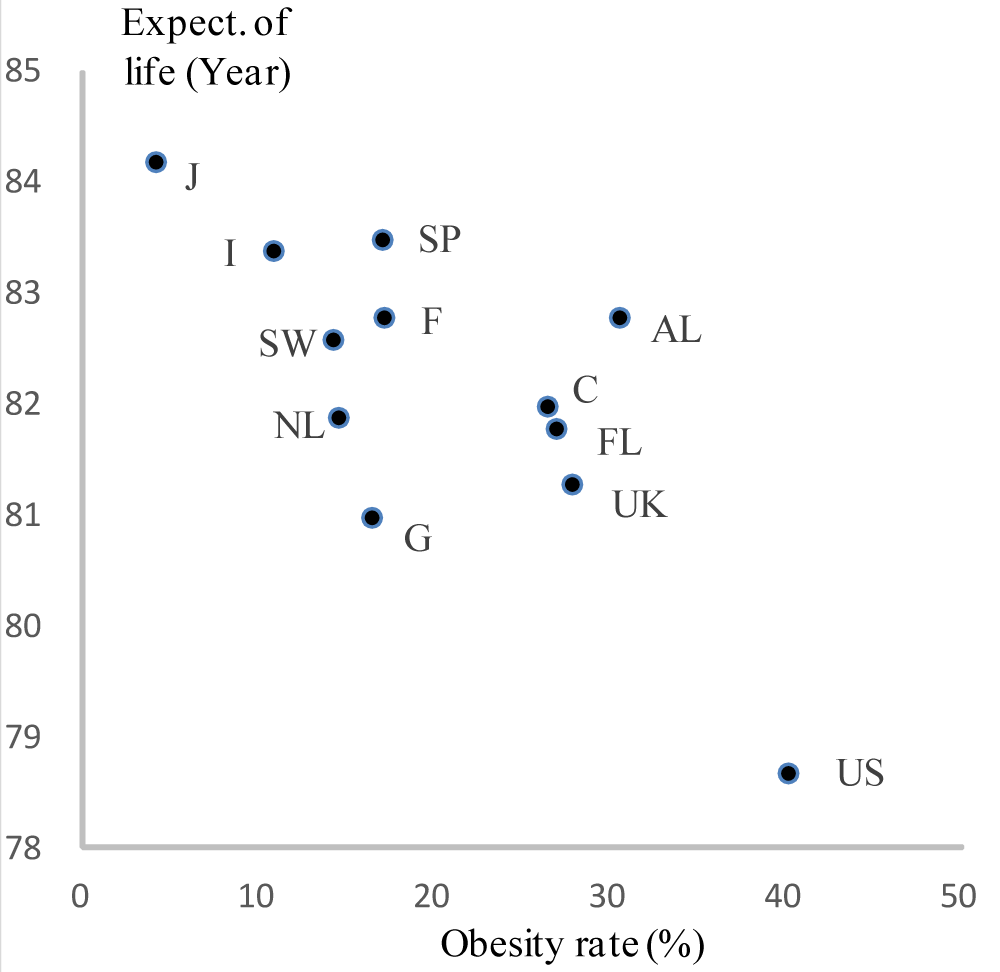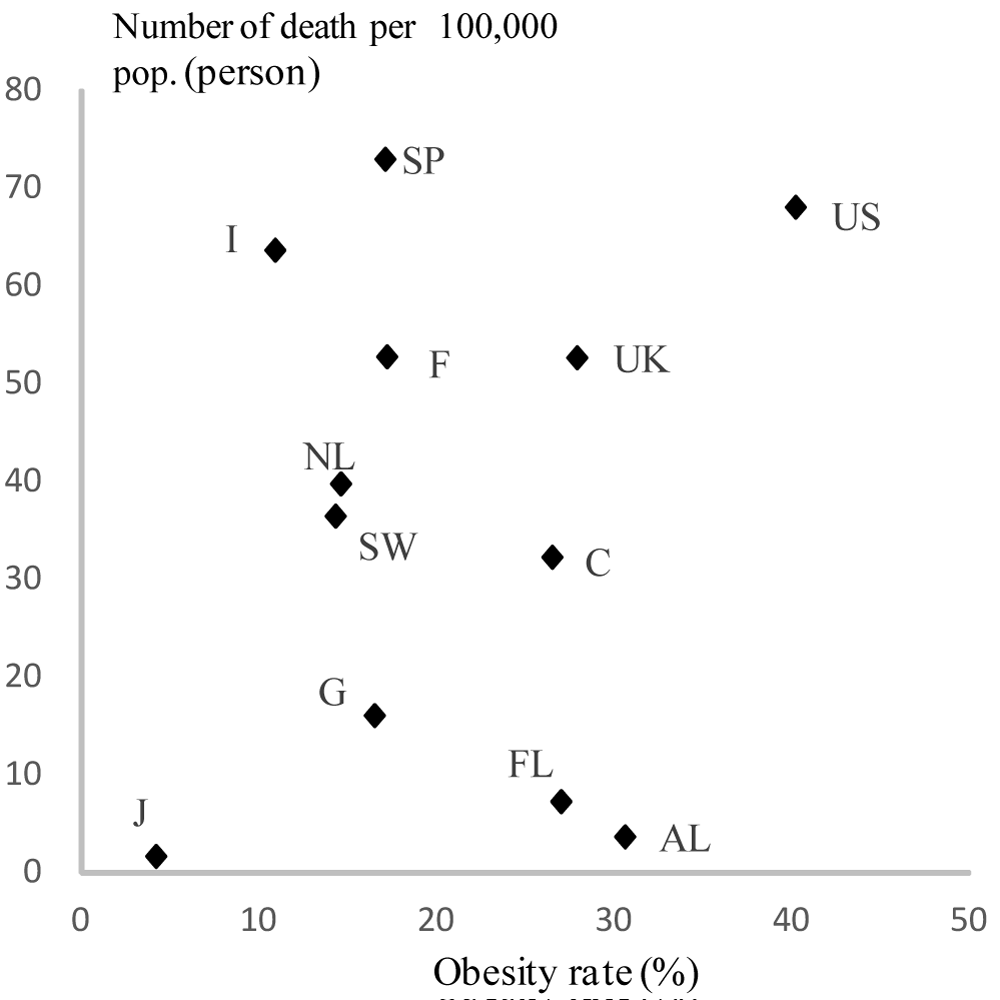More Information
Submitted: December 09, 2020 | Approved: December 21, 2020 | Published: December 22, 2020
How to cite this article: Fukawa T. Obesity may contribute to Japanese COVID-19 death rate. Clin J Nurs Care Pract. 2020; 4: 047-048.
DOI: 10.29328/journal.cjncp.1001028
Copyright License: © 2020 Fukawa T. This is an open access article distributed under the Creative Commons Attribution License, which permits unrestricted use, distribution, and reproduction in any medium, provided the original work is properly cited.
Obesity may contribute to Japanese COVID-19 death rate
Tetsuo Fukawa*
Visiting Professor, Hitotsubashi University, Institution for Future Welfare, Tokyo, Japan
*Address for Correspondence: Tetsuo Fukawa, Visiting Professor, Hitotsubashi University, Institution for Future Welfare, Tokyo, Japan, Tel: 81-3-6407-9700; Email: [email protected]; [email protected]
Japan enjoys the longest expectation of life at birth among major developed countries, and one possible reason for this is that obesity is rare in Japan. Further, COVID-19 death rate is extremely low in South Korea and Japan compared to the other developed countries, and low obesity rate may be related to this phenomenon.
First we compare COVID-19 death rate in 9 developed countries and confirm that it is quite low in Japan. Then we examine the relationships between obesity rate and expectation of life at birth as well as obesity rate and COVID-19 death rate.
Body-mass index (BMI), calculated by weight (Kg)/square height (m), is a measure of whether someone is underweight (less than 18.5), normal (between 18.5 and 24.9), overweight (between 25.0 and 29.9) or obese (more than 30). The followings are among key findings of OECD (2019) [1]:
- More than half of the population in 34 out of 36 OECD member countries is overweight and almost one in four people are obese.
- In the next three decades, overweight will claim as many as 92 million lives in the OECD with obesity and overweight-related diseases reducing life expectancy by nearly 3 years by 2050.
- In the EU28, women and men in the lowest income group are, respectively, 90% and 50% more likely to be obese, compared to those on the highest incomes, entrenching inequality.
- OECD countries will spend about 8.4% of their health budget to provide treatment for overweight-related diseases. On average in OECD countries, overweight will be responsible for 70% of all treatment costs for diabetes, 23% of treatment costs for cardiovascular diseases and 9% for cancers.
- Overweight and its related conditions will reduce gross domestic product (GDP) by 3.3% in OECD countries through increasing workplace absenteeism and lowering productivity.
Figure 1 shows cumulative number of death by COVID-19 per 100 thousand inhabitants in 9 countries (F: France; G: Germany; I: Italy; J: Japan; K: South Korea; SP: Spain; SW: Sweden; UK: United Kingdom; USA: United States of America). The death rate is very low in Germany, but it is extremely low in South Korea and Japan compared to Germany. Figure 2 shows modified death rate replacing infection surge in spring to that in autumn (no modification for Japan and South Korea). Figure 2 reveals that policy measures to control COVID-19 have been consistently failed in the USA.
Figure 1: Cumulative number of death by COVID-19 per 100 thousand population in 9 countries. Source: COVID-19 dashboard in ECDC. Note: m means Mid of each month and E means End of each month.
Figure 2: Modified cumulative number of death by COVID-19 per 100 thousand population in 9 countries replacing infection surge in spring to that in autumn. Source: Prepared by the author. Note: m means Mid of each month and E means End of each month.
Figure 3 shows obesity rate in X axis and expectation of life at birth in Y axis in 12 countries (9 countries in figure 1 plus Australia, Canada, Finland, and the Netherlands). Obesity rate is the proportion of those who’s BMI is more than 30 among total population. Expectation of life at birth is also for both sexes. If we eliminate a few countries such as Germany and Australia (AL), then we can see a negative correlation between expectation of life and obesity rate. Therefore, it is suggested that low obesity rate may one of the reasons for long expectation of life in Japan.
Figure 3: Obesity rate (X axis) and expectation of life at birth (Y axis) in 12 countries. Sources: OECD Health Statistics 2020 [2].
Figure 4 shows obesity rate in X axis and modified COVID-19 death rate in Y axis in 12 countries (no modification for Australia, Canada, Finland and Japan). We can still observe very high death rates due to collapse of medical services in spring infection surge in Spain, Italy, France, and the Netherlands (NL). Sweden is known as a country not taking strong measures, resulting in rather high death rate especially among the elderly. Australia and Finland (FL) have been succeeded so far in coping with COVID-19. If we eliminate all these countries from figure 4, then a positive correlation emerges between COVID-19 death rate and obesity rate.
Figure 4: Obesity rate (X axis) and number of death by COVID-19 per 100 thousand population (Y axis) in 12 countries. Sources: OECD Health Statistics. 2020 [2] and Figure 2.
Based on actual data at the end of November, COVID-19 death rate is 19.9 per 100 thousand inhabitants in Germany, which is very low among European countries. However the death rate is only 1.6 per 100 thousand inhabitants in Japan. The situation in the US is quite pessimistic: US has 4% of world population, but its share in the numbers of both infection and death by COVID-19 is about 20% of the world total.
Policy measures taken by the Japanese government to cope with COVID-19 are often assessed as too late and too little. However, Japanese death rate is so far astonishingly low, and people are looking forward to knowing the reason. We have to wait for future study to confirm whether obesity is related to this Japan’s miracle. In the meantime, we can draw the following implications:
Figure 3 suggests that low obesity rate may contribute to long expectation of life in Japan; and From Figure 4, we imagine low obesity rate may also have positive effect on COVID-19 death rate, although it is very much affected by actual policies.
Loneliness and social isolation are twice as harmful to physical and mental health as obesity [3] and the magnitude of risk presented by social isolation is very similar in magnitude to that of obesity, smoking, lack of access to care and physical inactivity [4]. Therefore, COVID-19 reveals various health problems.
- OECD. The Heavy Burden of Obesity. 2019.
- OECD. OECD Health Statistics 2020. 2020.
- Holt-Lunstad J, Smith TB, Baker M, Harris T, Stephenson D. Loneliness and Social Isolation as Risk Factors for Mortality: A Meta-Analytic Review. Perspect Psychol Sci. 2015; 10: 227-237. PubMed: https://pubmed.ncbi.nlm.nih.gov/25910392/
- Alcaraz K, Eddens KS, Blase JL, Diver WR, Patel AV, et al. Social Isolation and Mortality in US Black and White Men and Women. Am J Epidemiol. 2019; 188: 102-109. PubMed: https://pubmed.ncbi.nlm.nih.gov/30325407/



